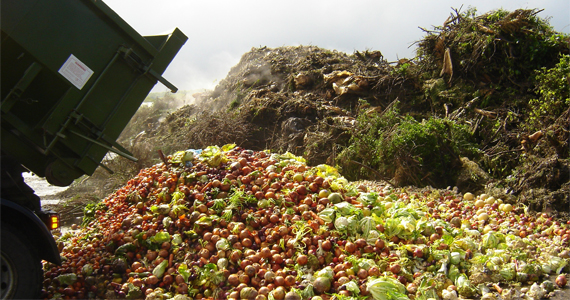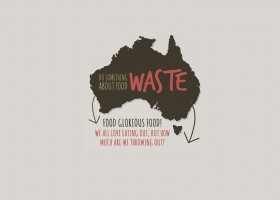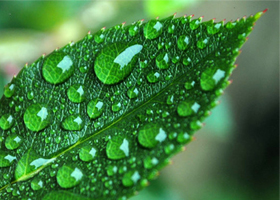
Watch our waste line
Author | Darryl D’Monte
Global attention has, understandably, focused on how the world does not consume a full third of the food that it produces, 1.3 billion tonnes, according to the UN Food & Agriculture Organisation’s (FAO’s) recent “Food Wastage Footprint” report.
This wastage is nothing short of criminal, in a world where 870 million go to bed hungry. In his 2009 book, Waste: Uncovering the Global Food Scandal, Tristram Stuart – who spent time in India before writing his exposé – cited how even in the most affluent countries, people go hungry.
There were 4 million in the UK, 35 million in the US and 43 million in the EU. However, less attention has been paid to the flip side of this waste: the astronomical environmental cost.
As much as 3.3 billion tonnes of greenhouse gases are emitted on growing , harvesting, packaging and transporting this third of the food, which correspondingly occupies nearly a third of the world’s agricultural land. And, to complete this one-third analogy, if these emissions emanated from a country called Waste, it would be responsible for a third of the globe’s greenhouse gases, less only than China and the US. In fact, it would vie with India as the third biggest emitter.
Most of the food that is wasted is grain, followed by fruit and vegetables, while meat and dairy products would figure last, being the most expensive items. Rice is the most consumed grain in the world and its cultivation releases methane, which damages the climate than carbon dioxide.
However, meat is the biggest culprit, so far as emissions are concerned. According to the Washington DC-based think-tank, Worldwatch, meat production has doubled since the 1970s. By 2007, 60 per cent of the meat was consumed in developing countries, though the per capita figures tell a different story: 85 kg a year in industrial countries versus 31 kg in poor countries. In its 2006 report titled “Livestock’s Long Shadow”, the FAO estimated the global livestock industry alone accounted for nearly a fifth of greenhouse gases, which obviously meant that the entire food industry would be contributing much more.
It takes around five kg of feed to convert into a kilo of beef, which is the most unsustainable product. If one accounts for only the land used for meat and dairy products wasted in the UK and US, it would amount to 8.3 million hectares. For the US in particular, Brazilian rain forests are being converted into cropland and ranches to feed that country’s infatuation with beef.
Globally, the consumption of water on growing food which is not eaten amounts to the flow of Russia’s Volga river or three times the capacity of Lake Geneva. There is another disturbing trend, which is emerging in India as well. This is to source fruits, vegetables and even meat and dairy produce from all over the world.
While climate change policy-makers are trying to penalise passengers for destroying the environment when flying – the EU has been trying unsuccessfully to impose a carbon tax — the identical toll taken of the atmosphere by importing millions of tonnes of farm produce is ignored. Even within India, the ubiquity of apples, now a perennial, extracts an ecological price.
No one has conducted a “waste food ecological audit” for India. It has the biggest cattle population in the world, with some 300 million heads, and will produce 135 million tonnes of milk, again the most in the world, this year. The US is a poor second, with only 90 million tonnes.
India is a major grain producer, with 95 million tonnes of wheat and 105 million tonnes of rice, as well as 7.5 million tonnes of oil. What is more, it has a more ecologically sound system of recycling farm waste like rice husk, straw and oil cakes which are then fed to cattle and poultry. Meat consumption, mainly poultry, is very low, only some 5kg per head annually, though rising in urban areas.
The poultry industry is worth nearly Rs 50,000 crore and growing at 20 per cent per year. However, due to mismanagement , subsidies and worse, it is literally an open secret that millions of tonnes of grain are rotting due to poor storage. A year ago, officials said that as many as 6 million tonnes of grain, worth Rs 8,100 crores, could go bad at a time when there were already 19 million tonnes lying exposed to sun and rain. High procurement prices have led to overflowing granaries, with some 82 million tonnes – a quarter more than storage capacity.
Irrigation accounts for 80 per cent of the water used in India, so many millions of litres are wasted if grain isn’t consumed. Experts like Rahul Kumar, managing director of the Amul dairy in Anand, point out that with 17 per cent of the world’s cattle population on 2 per cent of the world’s land, the country’s livestock faces the same problem as its people: feed insecurity and malnutrition.
There is a 25 per cent deficit in dry fodder, 65 per cent in green fodder and 60 per cent in feed concentrates. In spite of this , the country inexplicably exports about 2,00,000 tonnes of rice bran, after the oil is extracted, and oil cakes worth Rs 8,500 crore every year.
This should be retained for livestock to keep feed prices in check. In 2010, the UN Human Development Report cited how, using a new “multi-dimensional poverty index”, eight Indian states had more poor people than the 26 poorest sub-Saharan African countries together. The food security law should help improve the abysmal nutrition profile of the population, particularly of children. Since two-thirds of the population will be entitled to subsidised grain, it will reduce the mountains of grain which are turning inedible even for cattle.
It is high time surely that this most atrocious form of waste ended.
Credit: This article originally appeared in the Hindustan Times. Darryl d’Monte is a Mumbai-based journalist, former Resident Editor of The Times of India, and chair of the Forum of Environmental Journalists in India.






